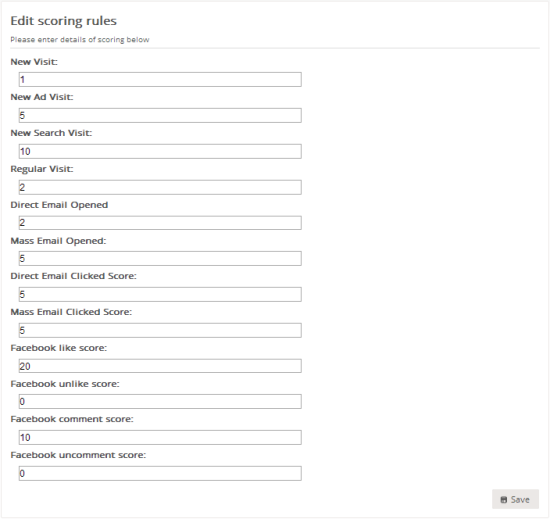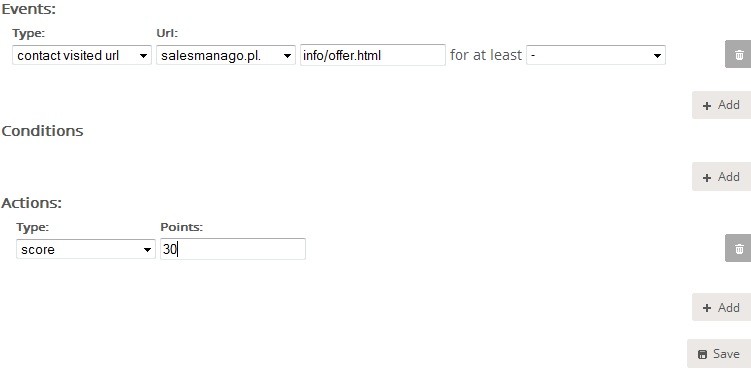Two weeks ago we discussed initial processes to be taken by rookies implementing Marketing Automation. We hope you found those tips useful and helpful to understand basic principles and rules when activating a new marketing solution. As we are familiar with the first steps, now it’s time to move on to higher level activities. Today, we give you a few firm prompts referring to lead scoring, Lead Nurturing, contact segmentation and simple automations.
The previous text (read HERE), discussed basic activities and functioning of the system for marketing and sales automation, which is necessary knowledge for everyone, beginning the work with new tool. From the previous article we know that:
• all marketing activities can be tied in one consistent process
• conversion is the main objective of our activities
• it’s worth to educate our acquired contacts before delivering them to sales department – Lead Nurturing
• marketing must cooperate with sales department to increase sales
Thanks to this information, from the very beginning, we build solid foundations for further development of our automation activities in our company. Having basics reviewed, it’s time for more engaging and advanced activities. The following tips will be particularly useful for those already working with Marketing Automation system for some time. In this article we are going to focus on:
• client scoring
• contact segmentation
• simple automations
• marketing and sales campaigns
• Lead Nurturing
After pasting monitoring code on WWW page and launching initial sends we quickly see first monitored contacts and scoring, assigned by the system to their contact charters.
1. Client scoring
Scoring is a crucial but simple tool, thanks to which it’s easy to monitor client purchase readiness and pick up most important sales contacts. Each Marketing Automation system has preconfigured model of assigning scoring points.
Points are assigned for each system identification of any client behavior. Scoring should reflect client’s purchase readiness. Thus, each company needs to customize general scoring rules, so that the highest number of points are assigned for behaviors leading up the client to prompter sale. A good scoring should:
– reflect client purchase readiness
– include general scoring rules for particular behavior type
– include individual rules assigning points for specifically important behavior
– measure involvement and client purchase readiness multi-levelly
In SALESmanago system, individual scoring principles, can be set up within automation rules. It’s enough to pick up a kind of behavior we are interested in from the list of episodes and assign how many points we want to dedicate for it:
It’s worth to know that the SALESmanago allows to measure scoring multi-levelly. It can be counted:
– globally for contact charter
– for a particular person on a particular sales stage
– for a particular person in particular tag
This way, right next to general scoring we can count points in various dimensions, measuring client behavior in different fields and stages of the sales process.
2. Behavioral segmentation and basic automations.
Accordingly configured segmentation of potential and current clients results in building a group of persons interested in particular product and services groups. The most successful groups are build on the basis of true behavior of each person. Behavioral segmentation we are talking about, relies on automatic assigning of contacts to a particular group on the basis of subpages/sitelinks visits. SALESmanago allows to segment clients, who visited:
– particular URL address
– URL addresses including specified words
– URL address including specified signs sequence
On that basis, the system will automatically assign contacts to particular groups and tailor-made messages sent and accomplished to such segments have 300% higher opening and 500% higher click rating. Additionally, they increase contact activity on WWW page:
3. Simple automations
Once we begin to work with Marketing Automation system, it’s wise to implement initial, simple automations. It’s common practice to start with notifications for sales departments and call centers. In order to do that, SALESmanago uses automation rules. When creating such rule, we use a minimum of one event and one action. Most often, the event is an interaction performed by client, important from the sales point of view, like for example downloading e-book, checking price list, dropping the basket or high scoring. Below, you can see the rule, which notifies about reaching high scoring by a specific client:
Then, we can execute follow-up automations such as:
– automated welcome messages
– messages sent automatically to persons added to a particular segment
– automated emails resending to persons, who opened but not clicked in the message
– automated thank-you-messages for completing the transaction
– messages notifying about a new blog post
– automated contact forms for anonymous visitors
… and many others.
4. Lead Nurturing – potential clients education.
It’s easier and easier to acquire potential client contact data. However, if we immediately direct such contacts to sales department without initial verification, we can’t think of conversion higher than 5-6%. That’s why, new educational programs were created for recently acquired leads, which rely on providing essential information and key ideas. Their main function is to recognize the sales process stage on which a particular contact is and provide information he needs, which will help to move him down the pipeline. When designing messages for Lead Nurturing, we need to focus on what value our product or service may give to the client, new possibilities and profits for him. In the beginning, it makes sense to prepare basic Lead Nurturing program for all contacts. Yet, later on, once we see how it works, we should add suitable programs, focusing on the stage our contact is on and his interests. Client segmentation and creating marketing-sales campaign will surely be helpful. In this situation, educational content should cover the segment our client is in and regard sales process stage. A client who only started exploring the product and the one, who is close to the purchase will require completely different content. Here are elementary types of Lead Nurturing programs:
– directed to recently acquired, ‘cold’ contacts
– tailored to consecutive campaign stages
– regarding events organized – message before and after the event
– directed to persons, who resigned from purchase or dropped the basket
– directed to competition clients
– for potential clients, directed to sales department
Accordingly prepared Lead Nurturing programs help reach up to 27% of sales conversion.
To sum up
The above mentioned tips will help everyone, who wants to progress marketing and sales automation in his or her company. In next article, we will draft a follow-up set of more advanced tips and actions. This way, we’d like to explore full spectrum of possibilities granted by Marketing Automation systems. Share your experience in comments!





 Follow
Follow
















